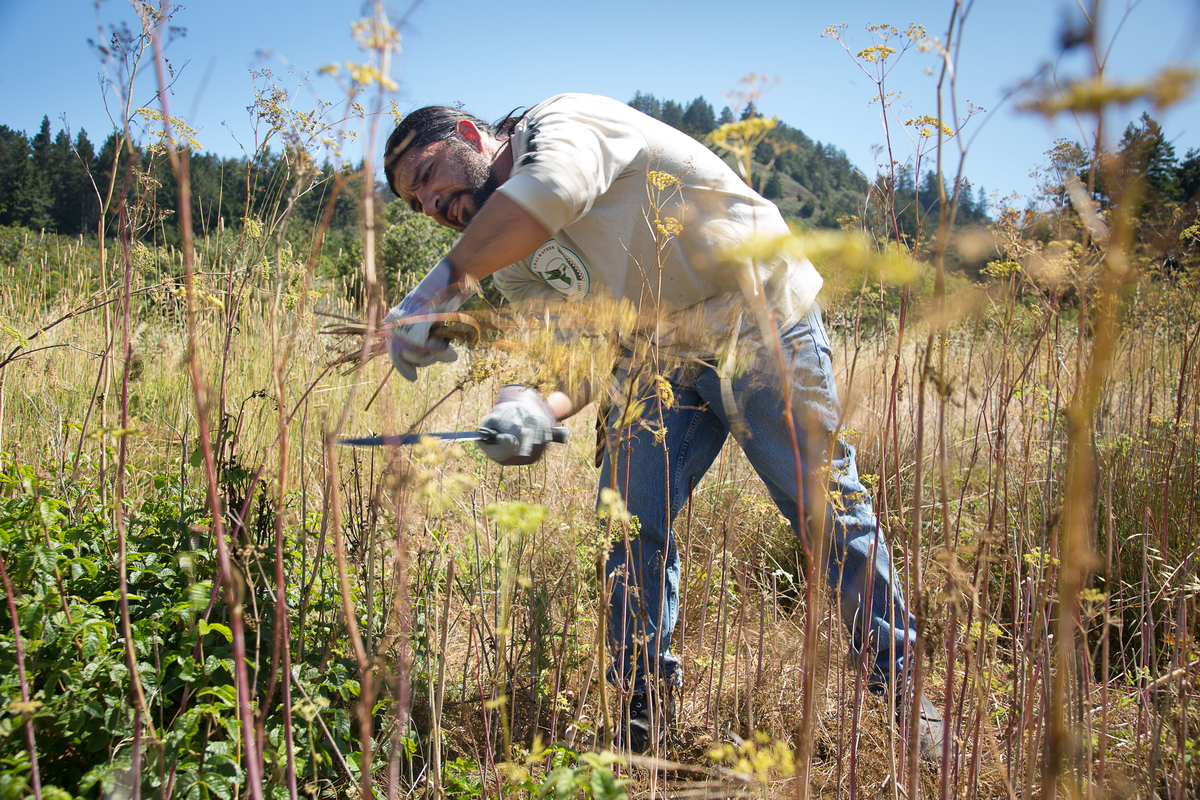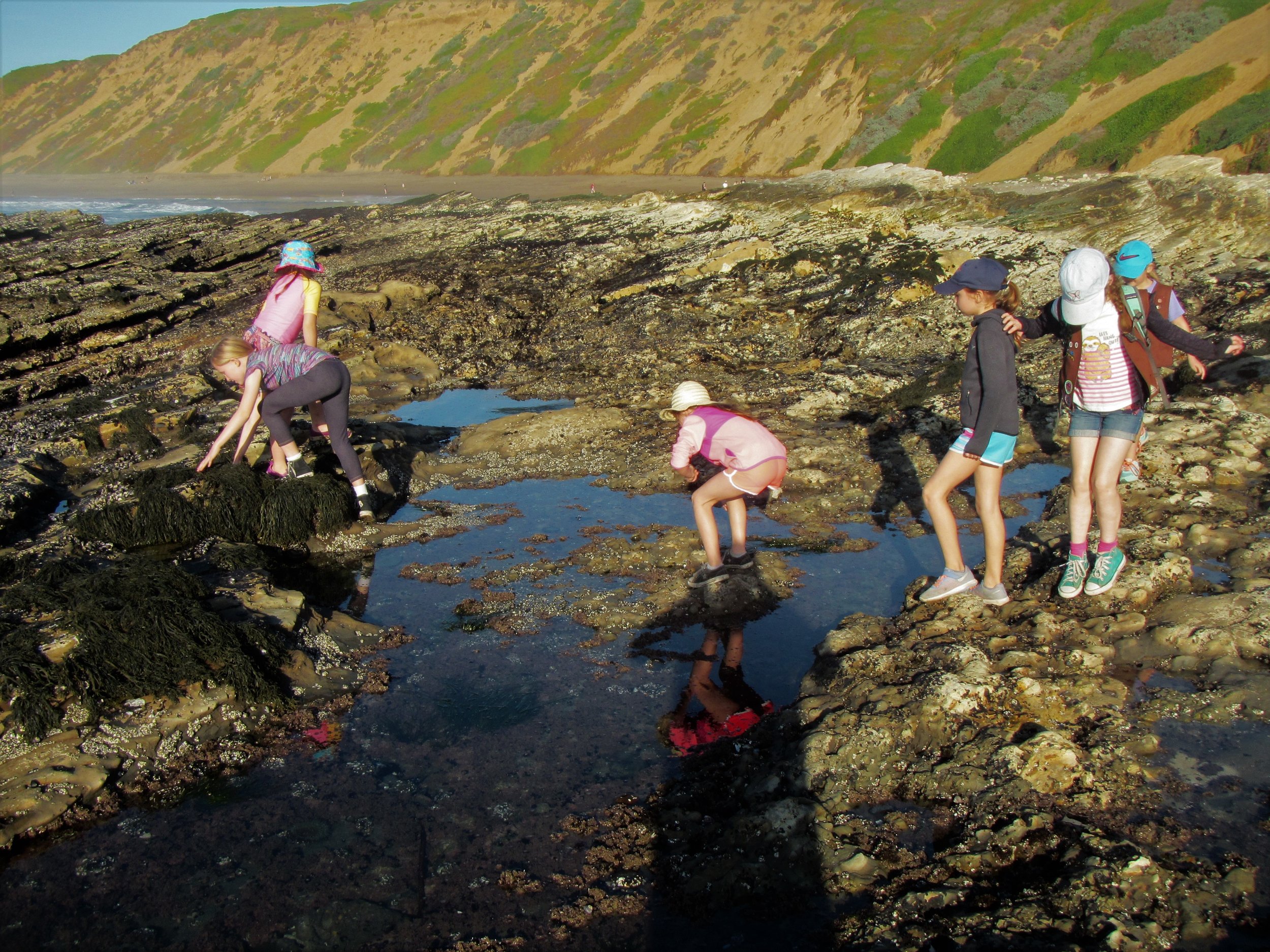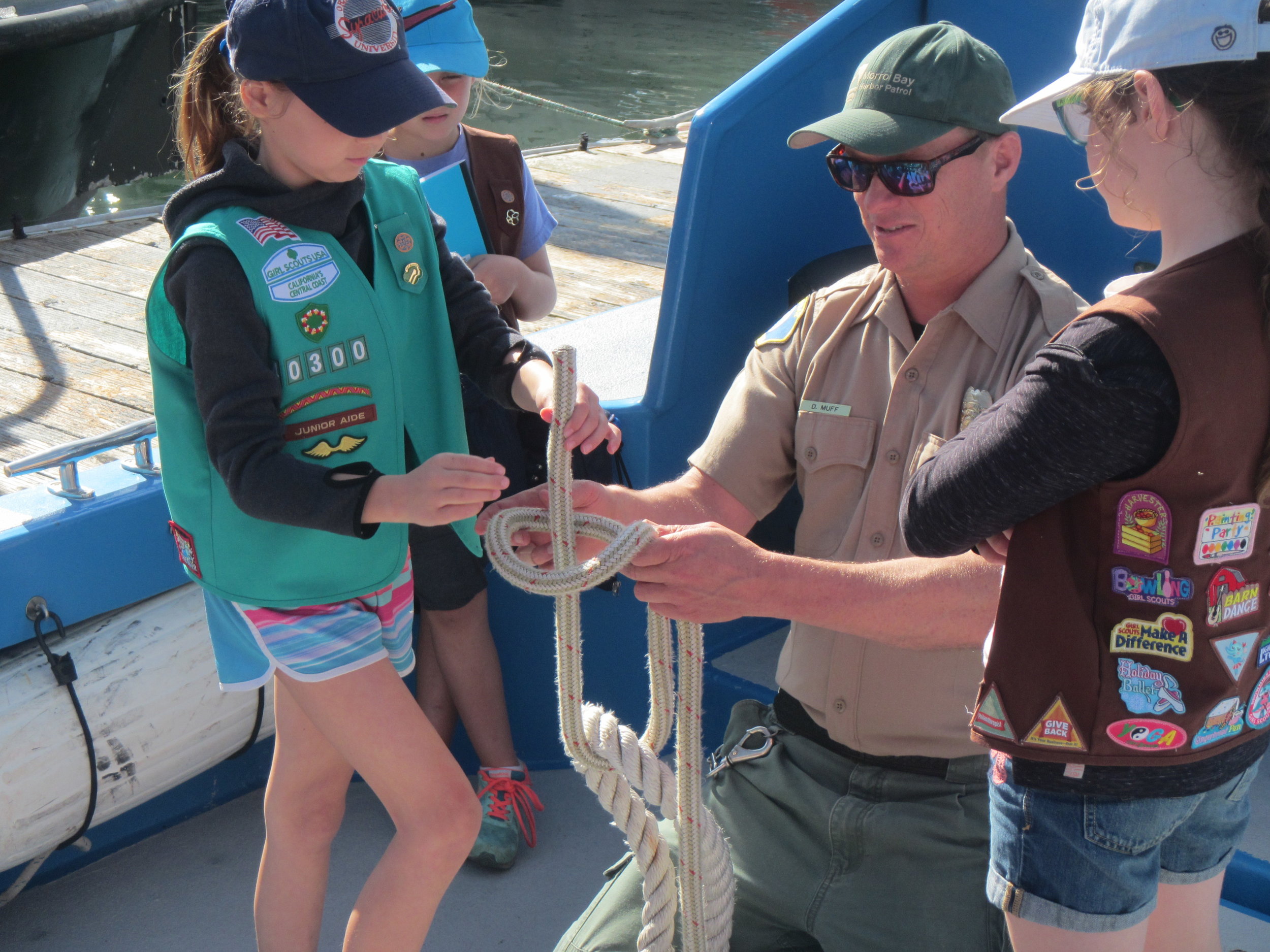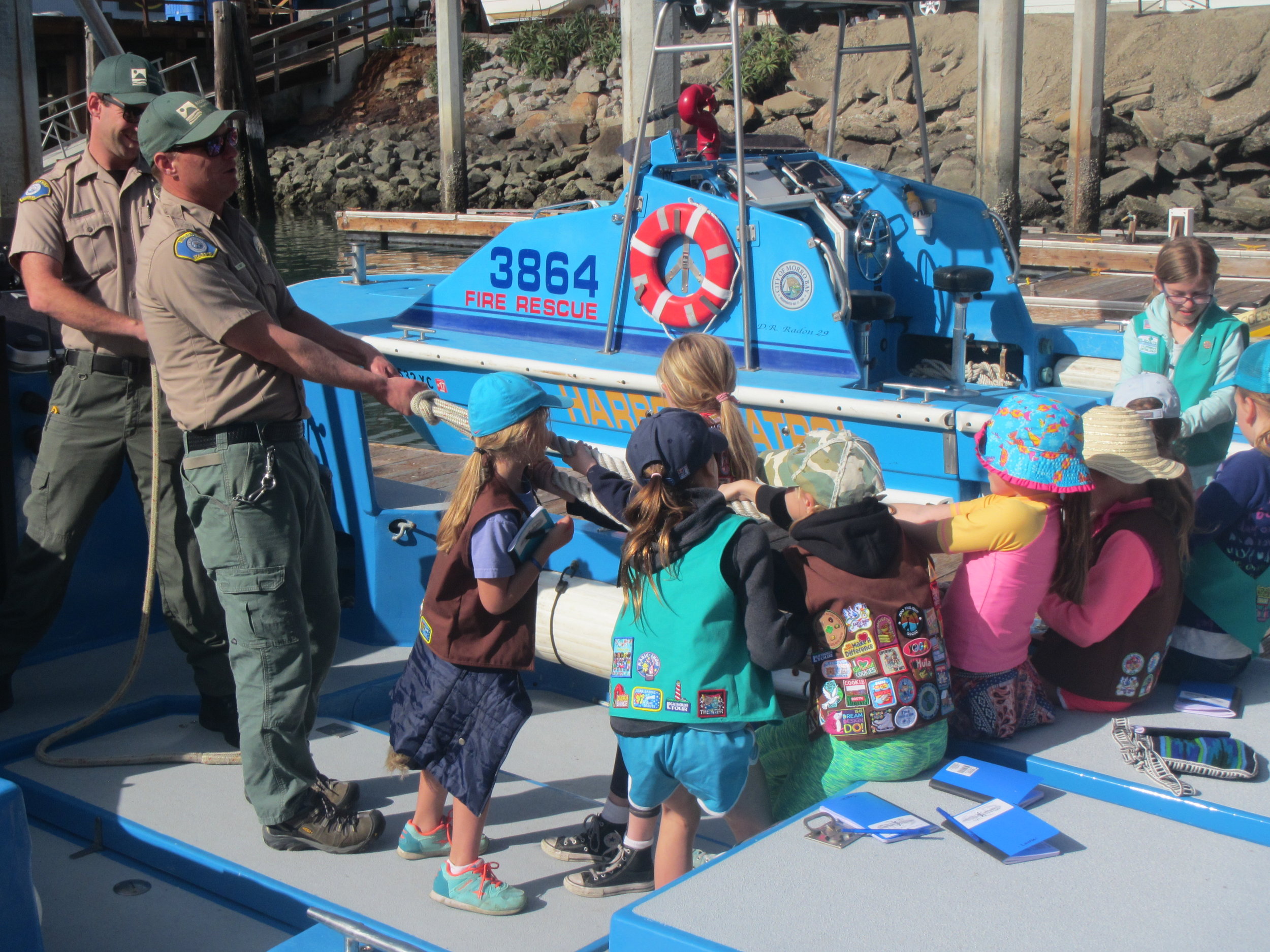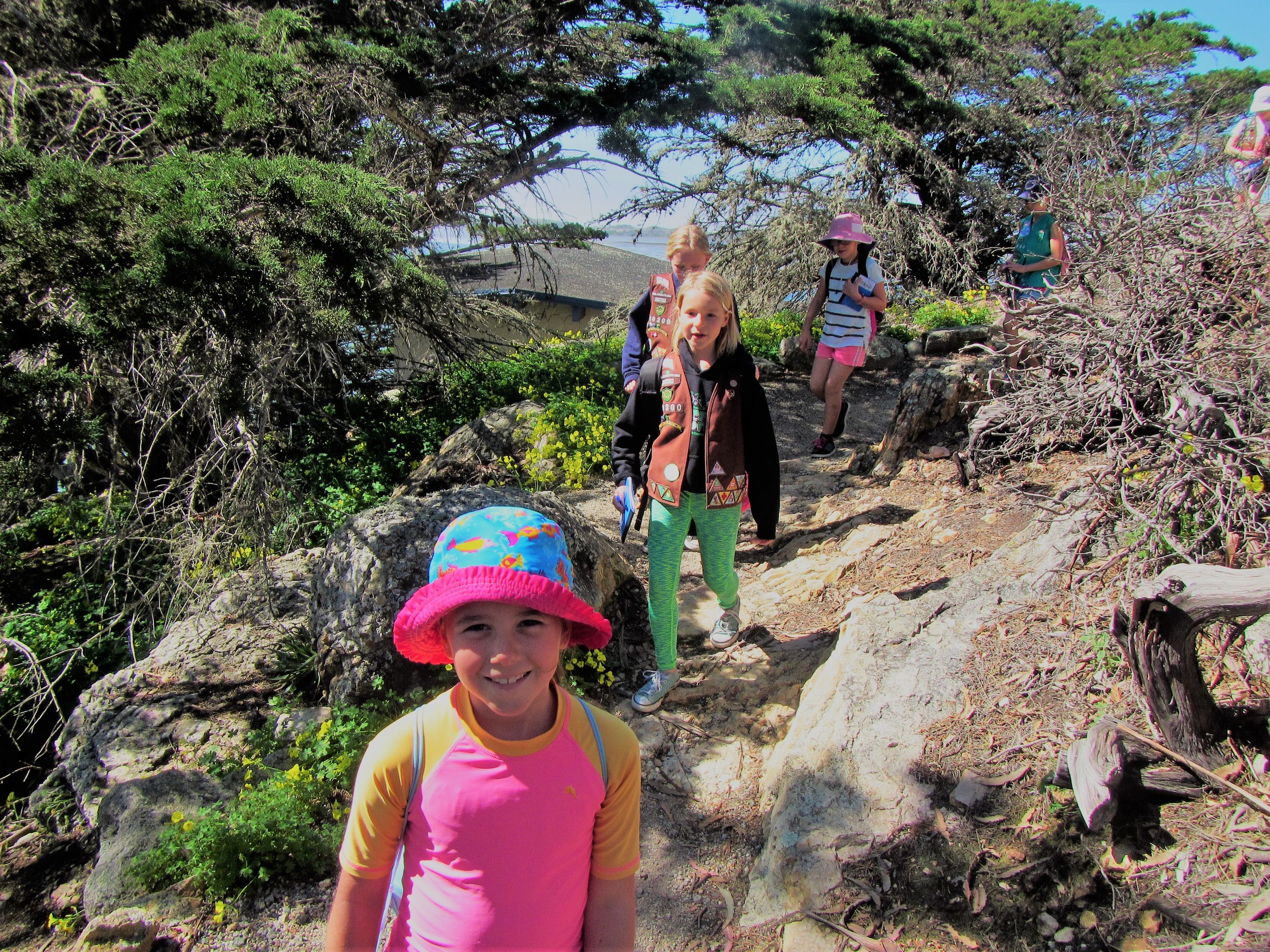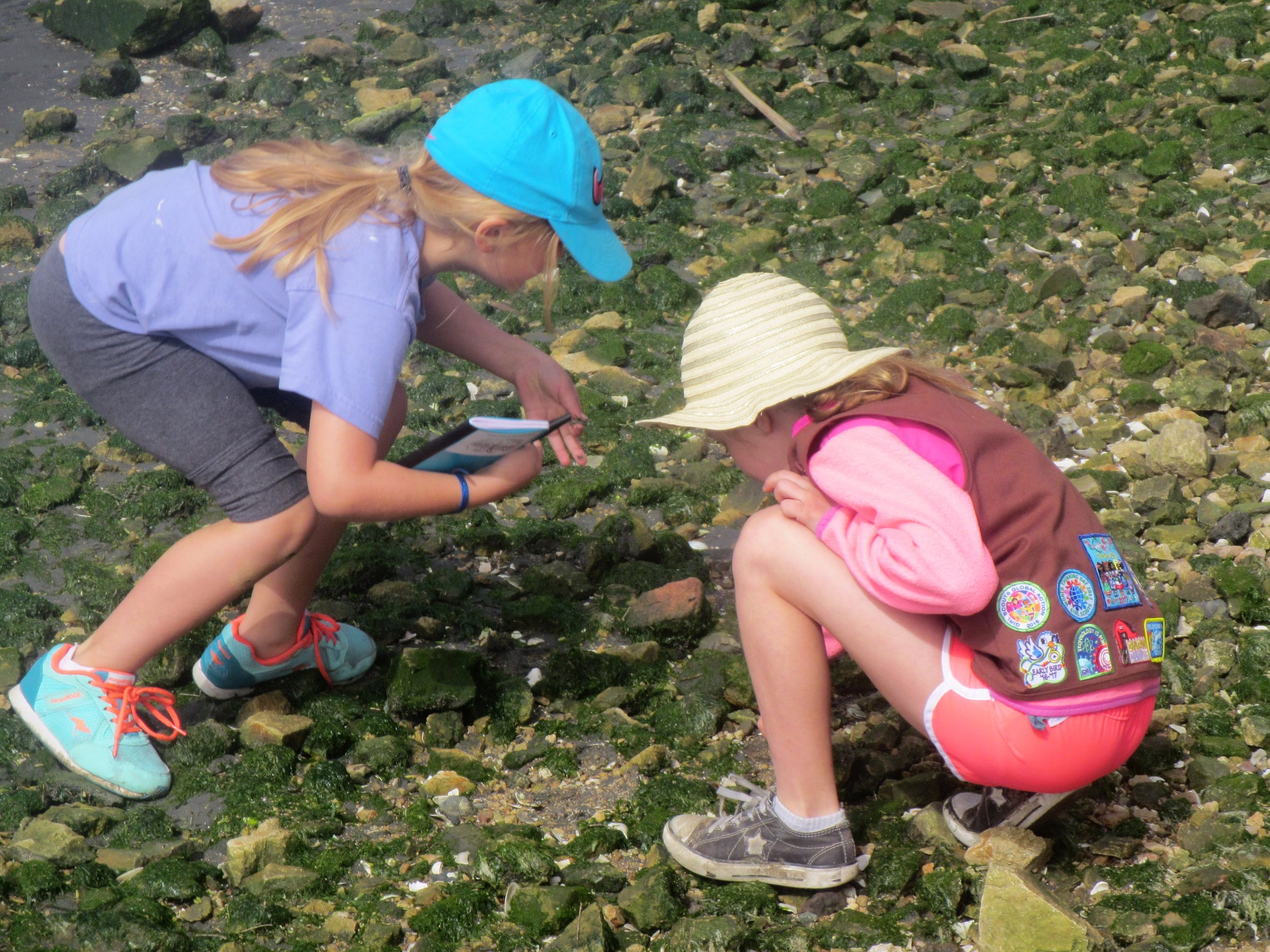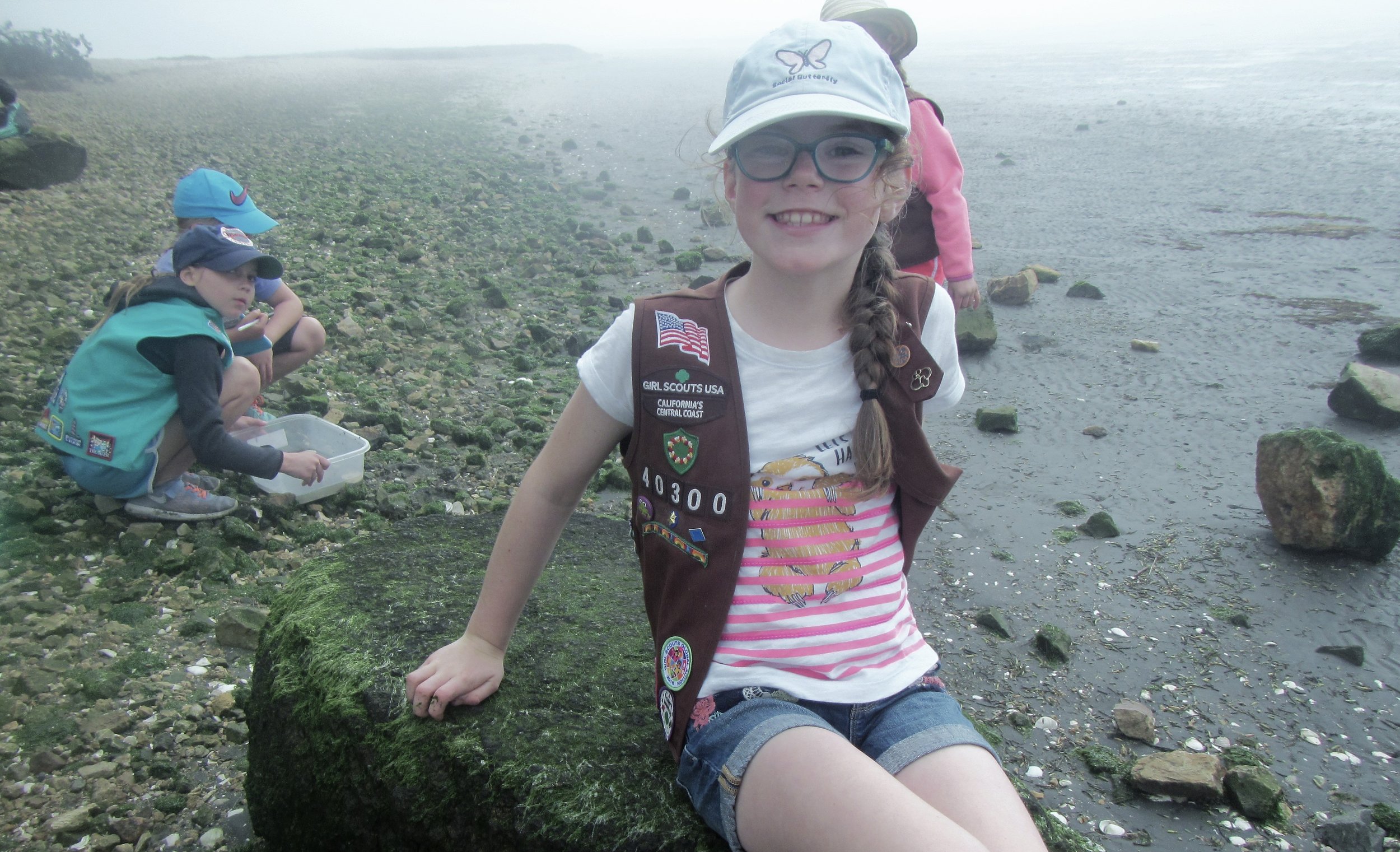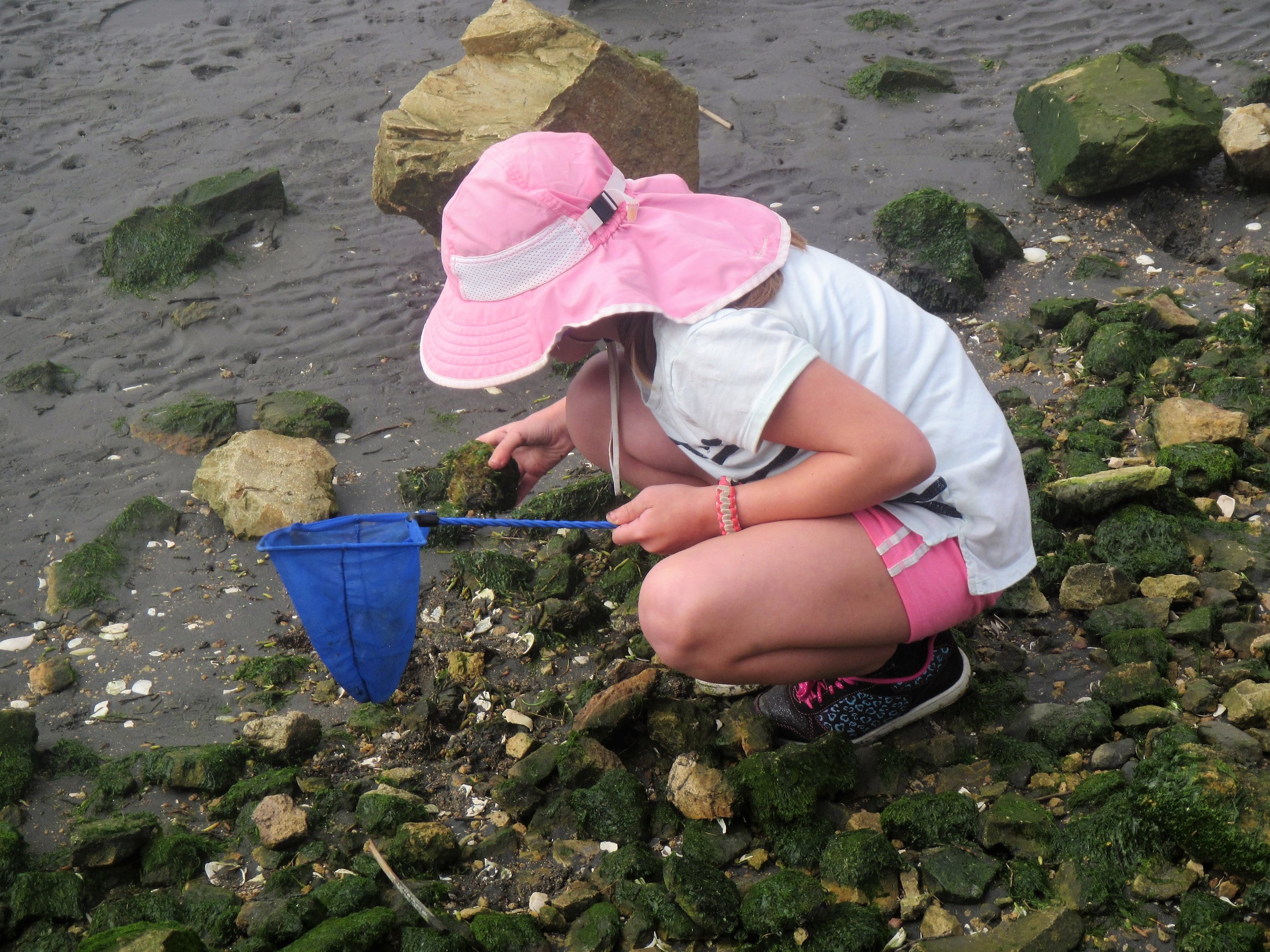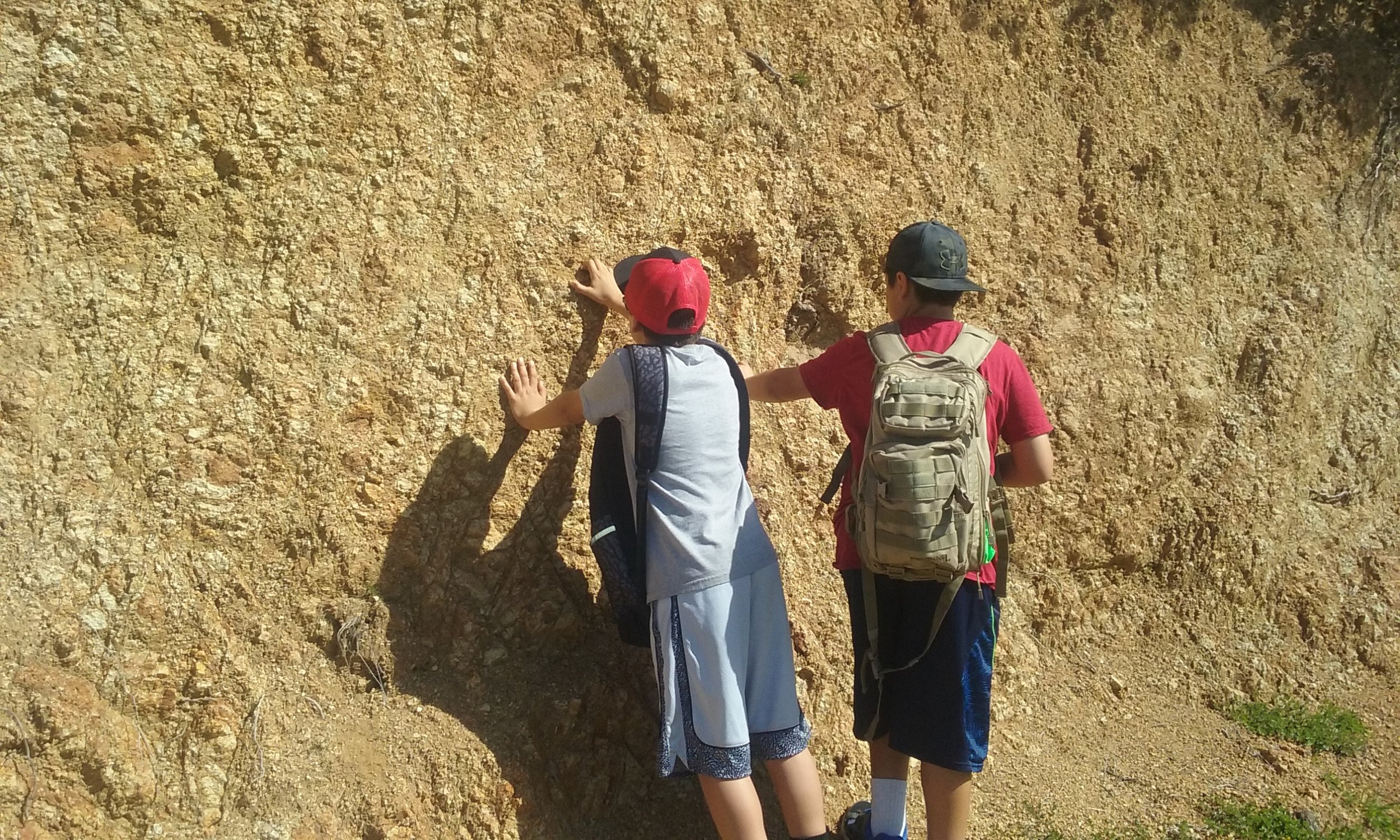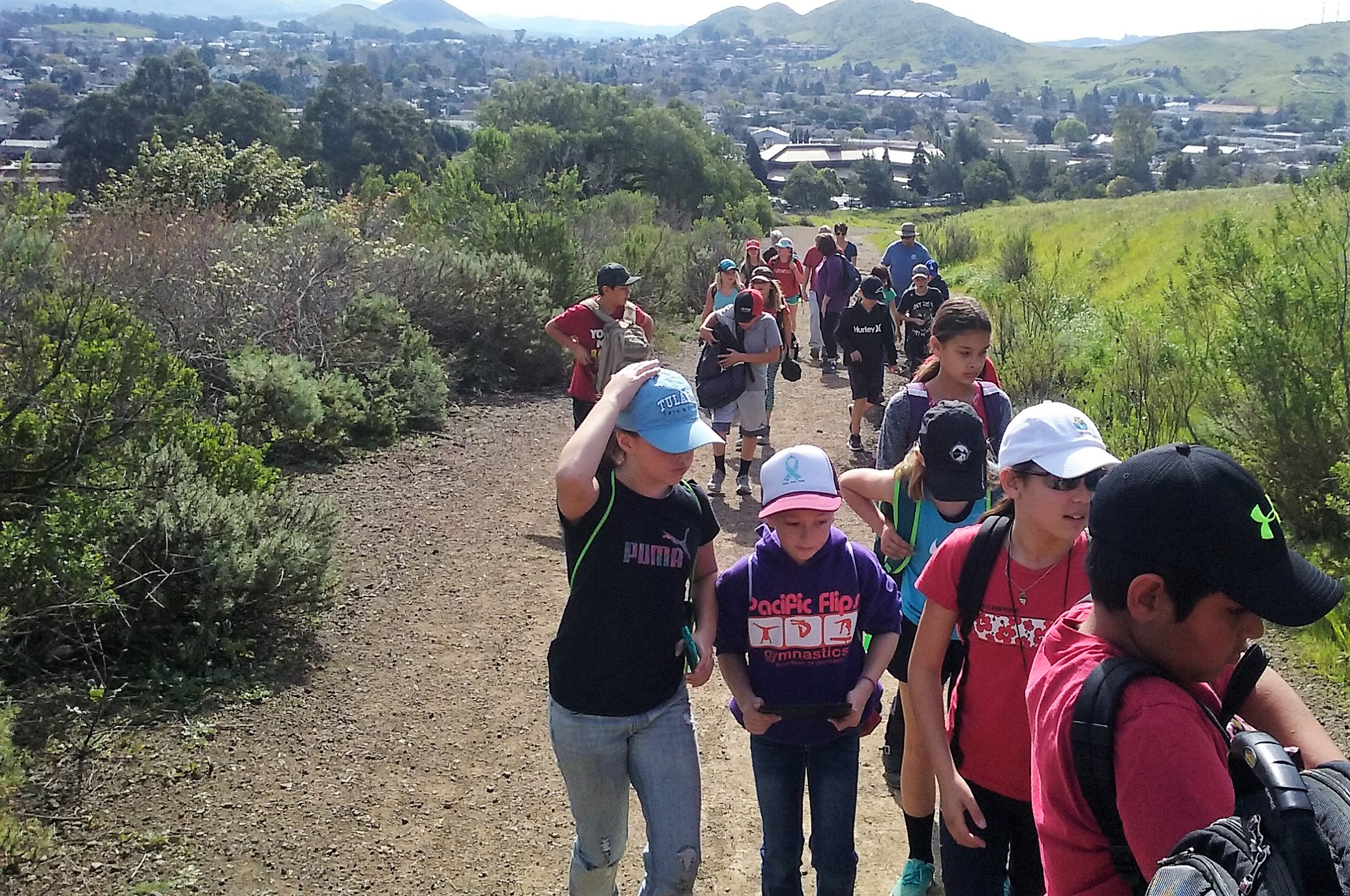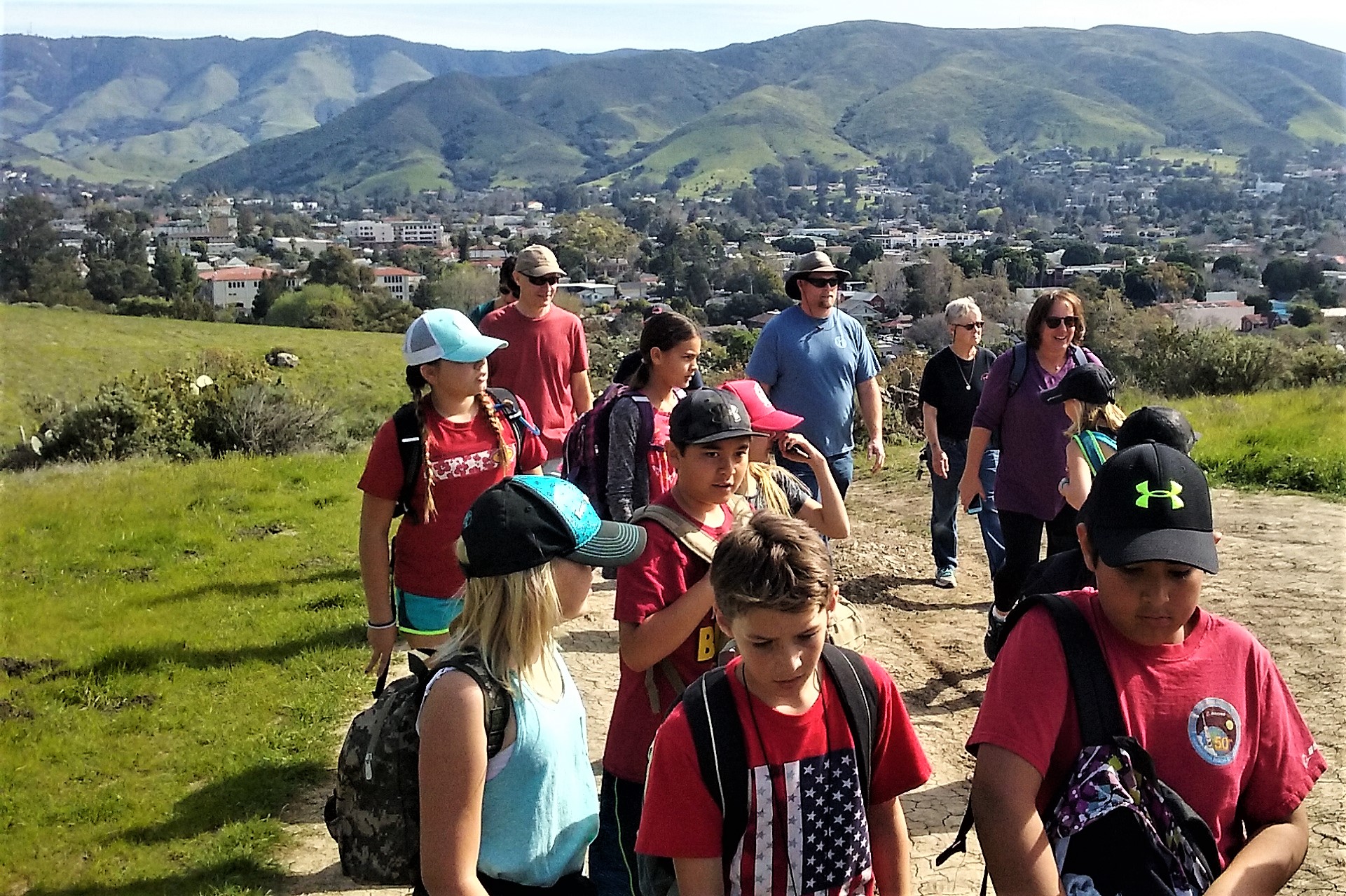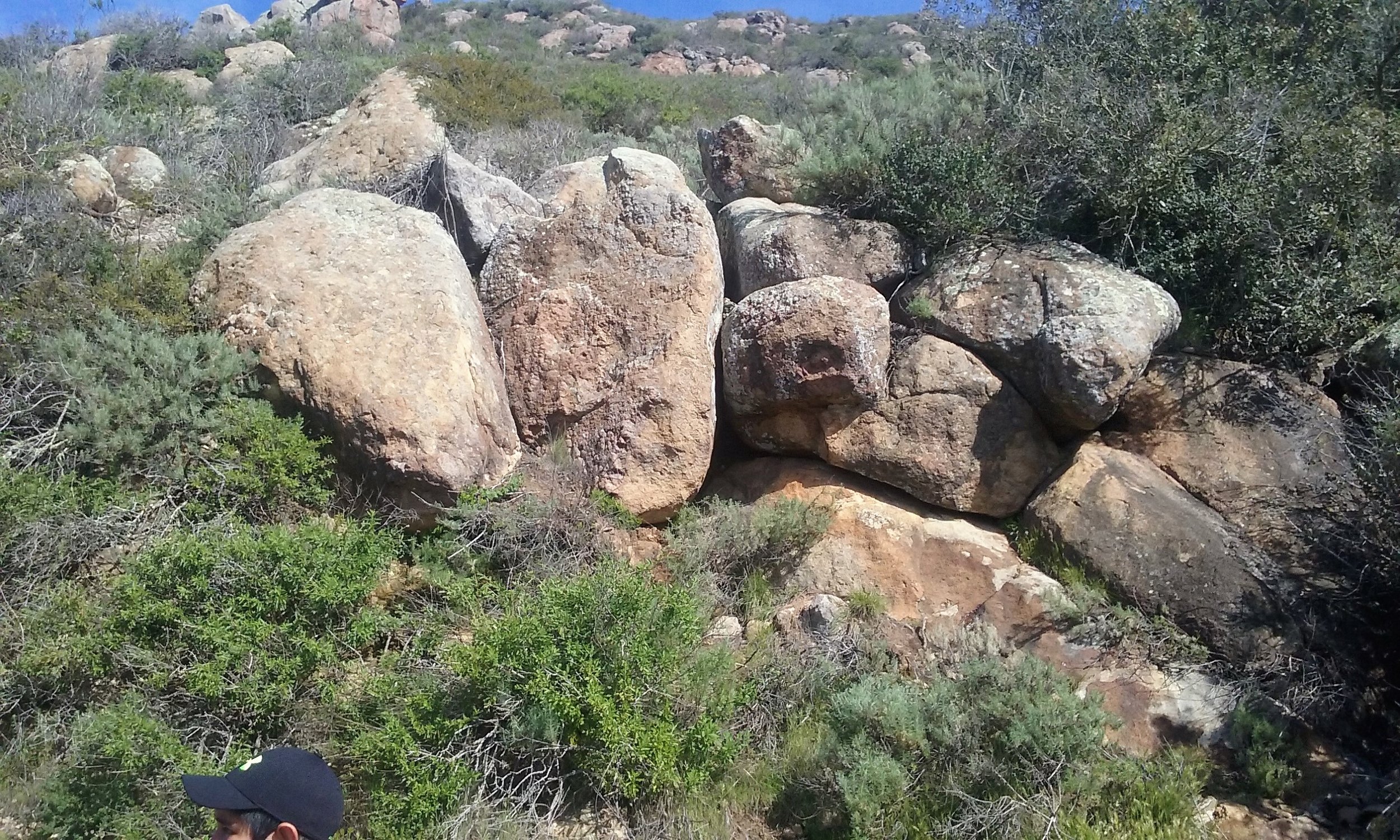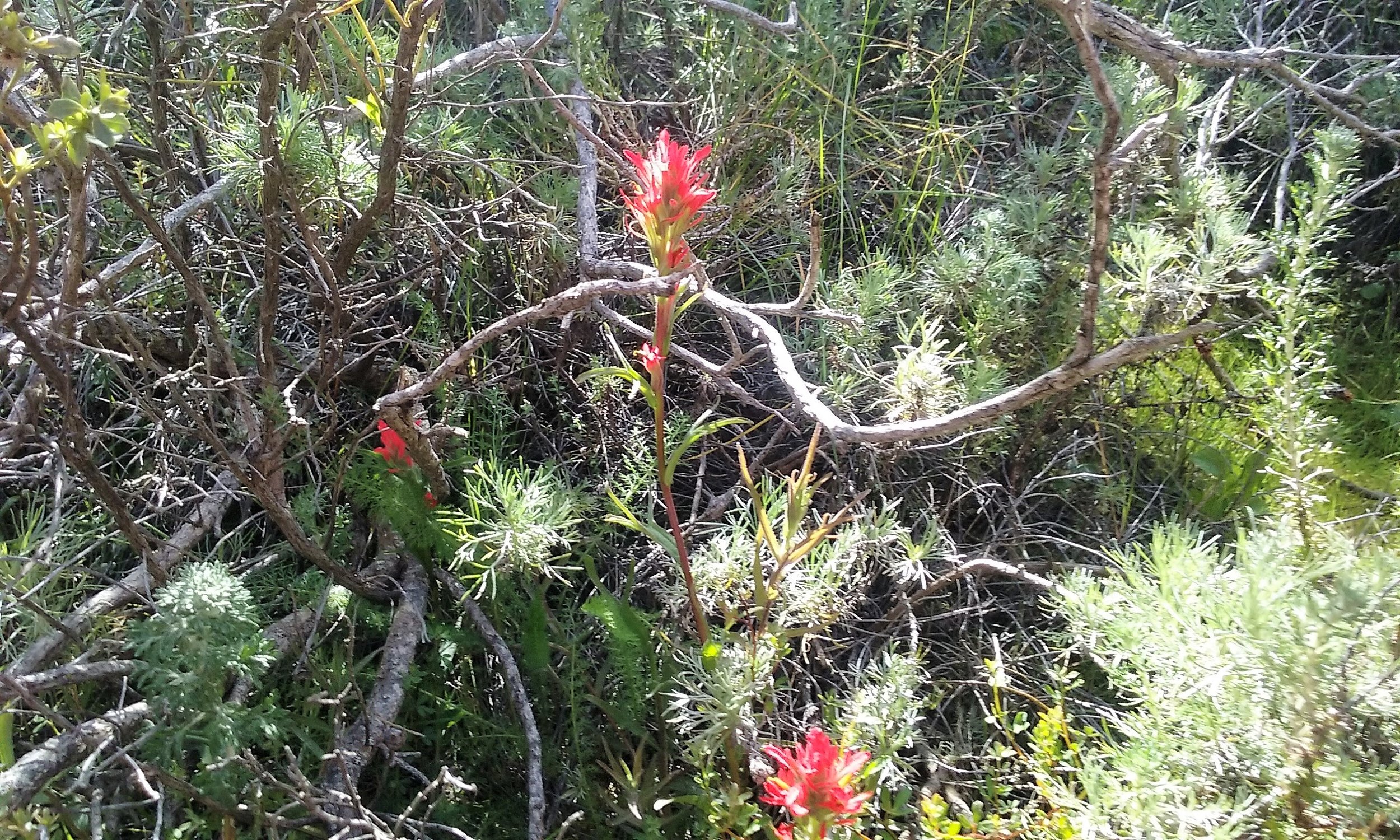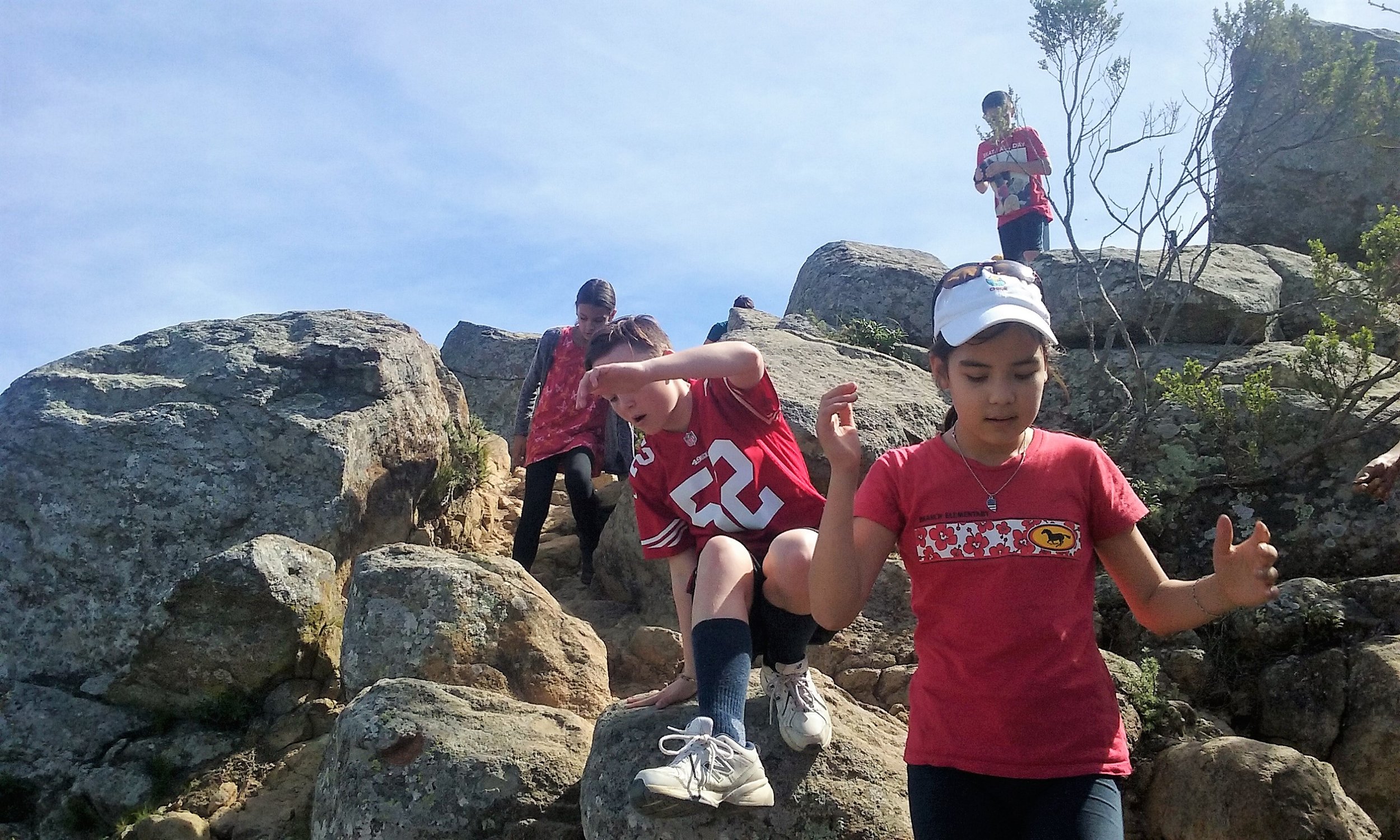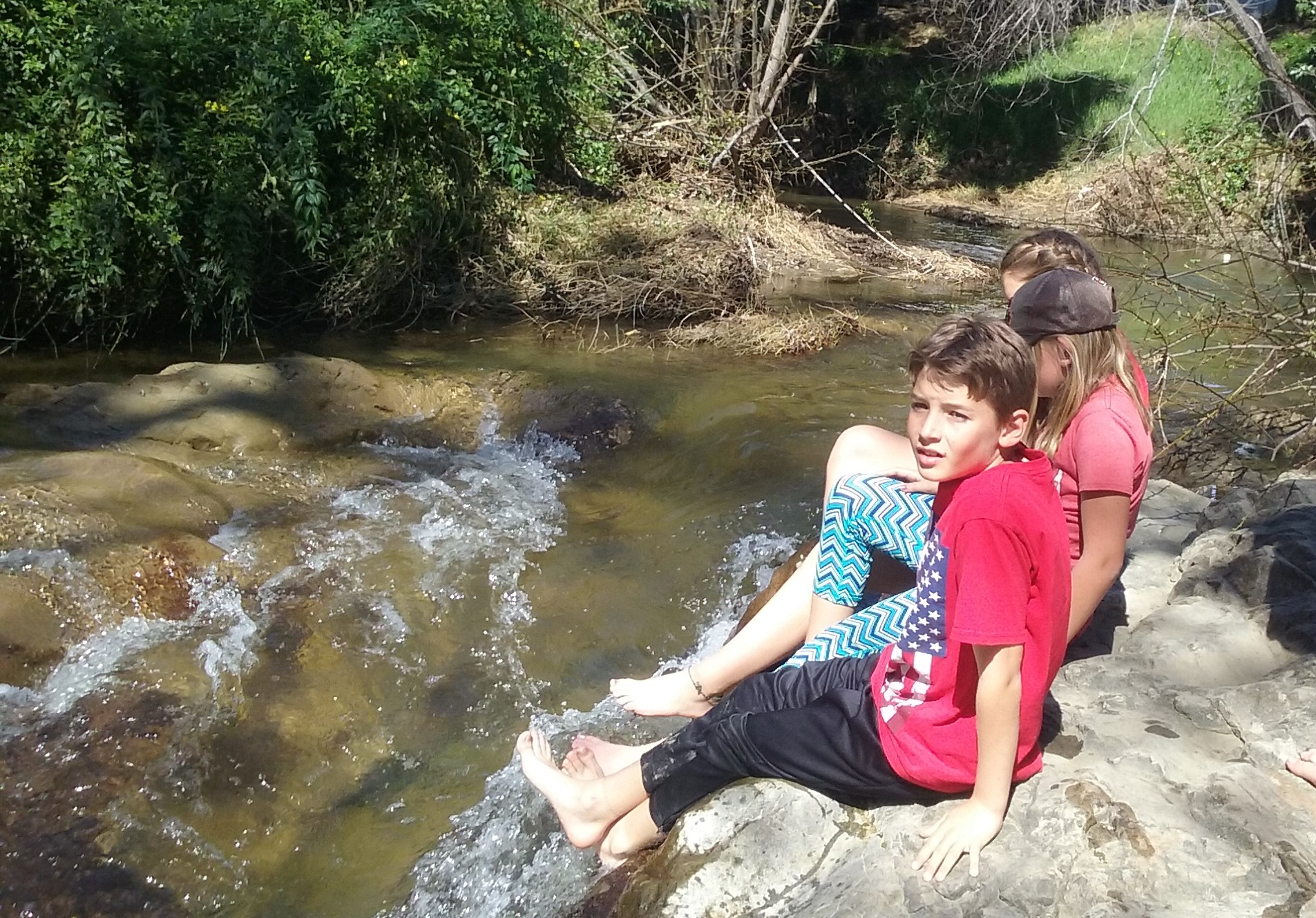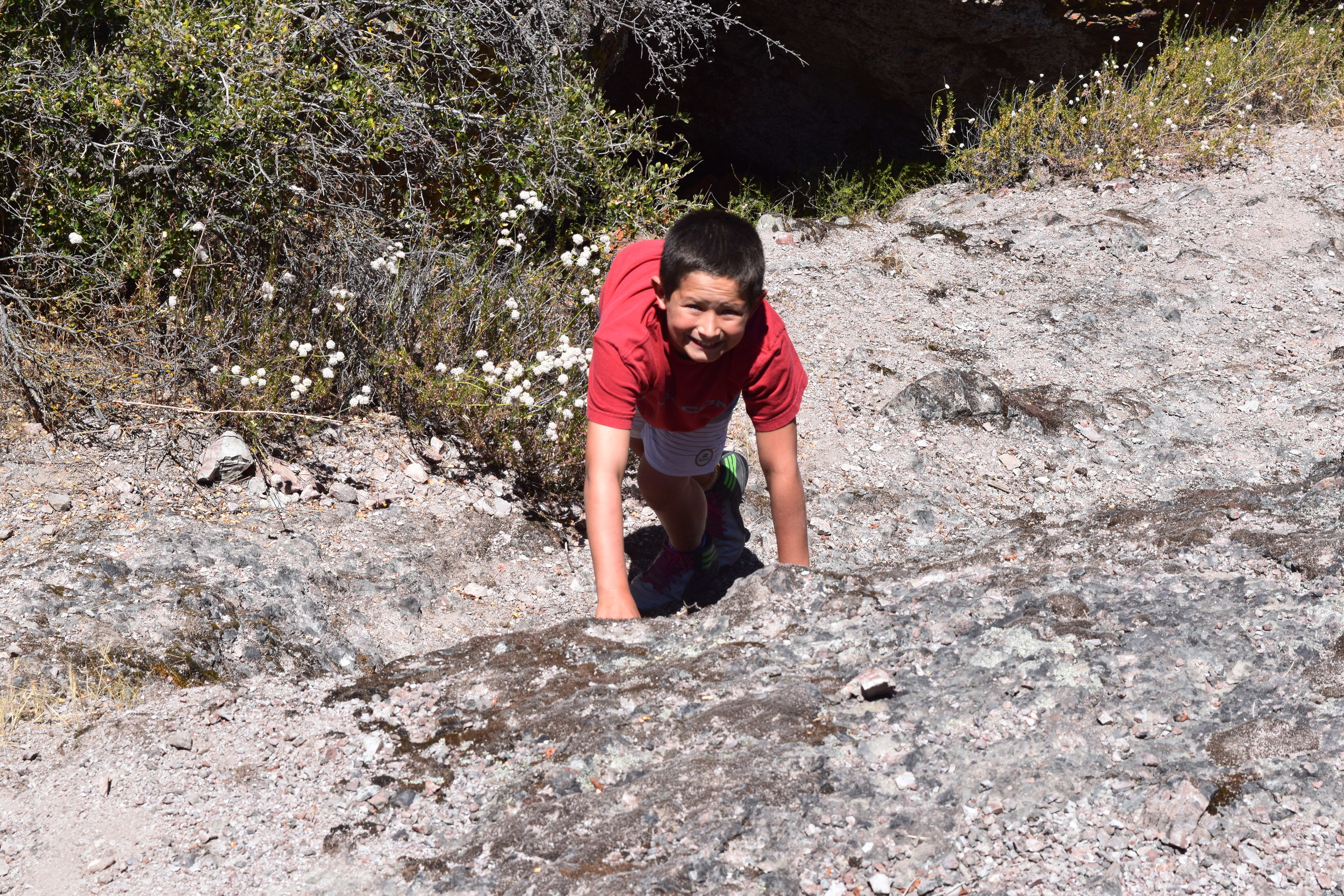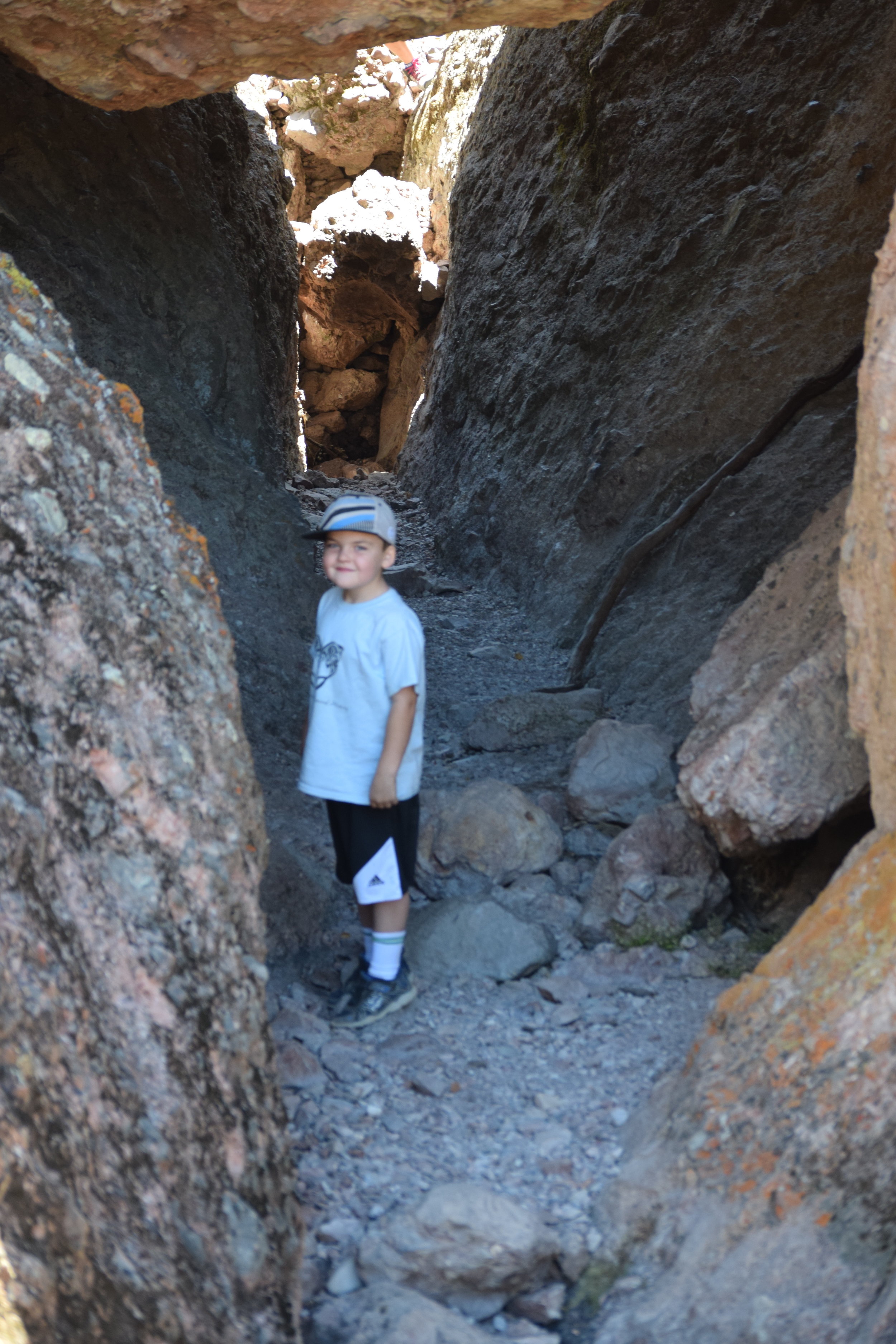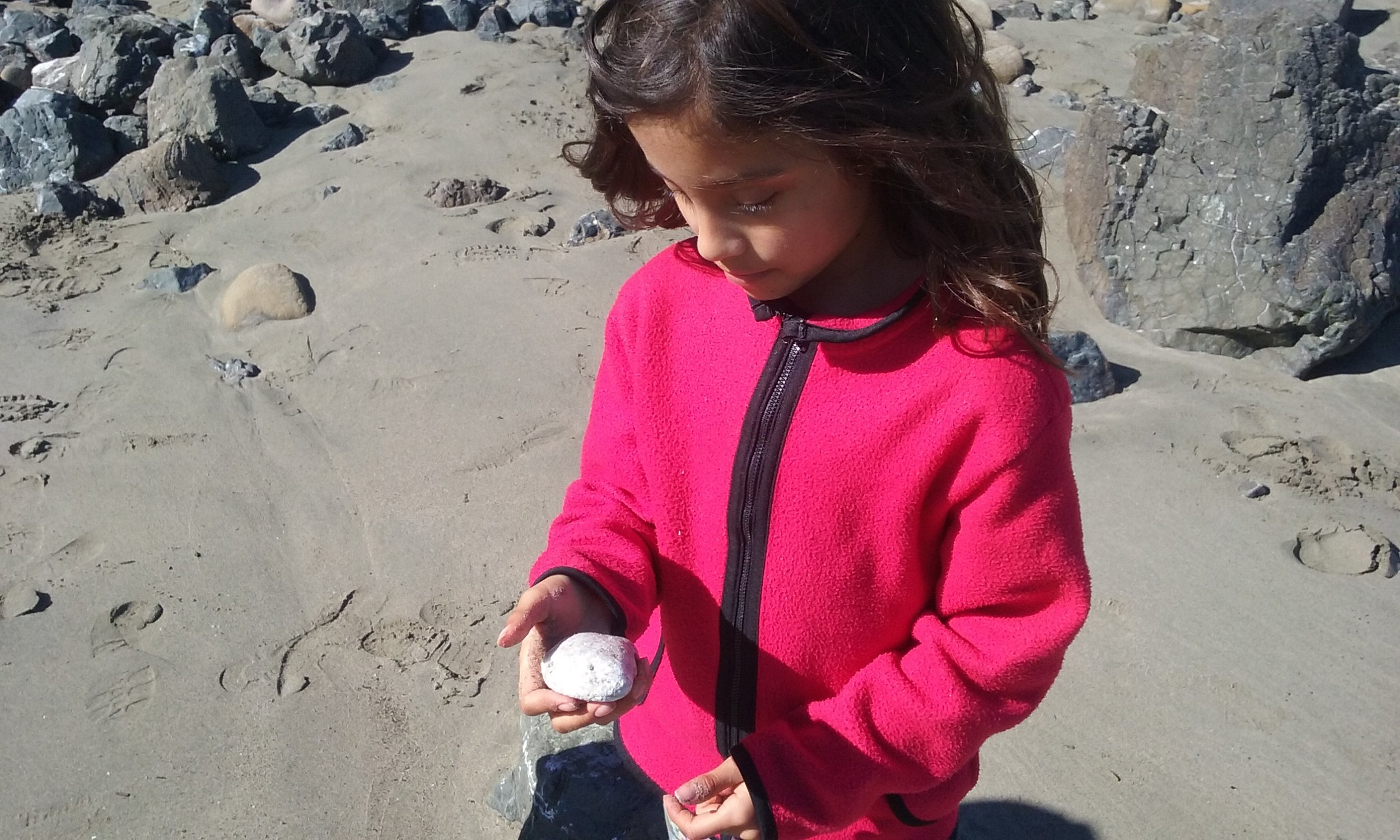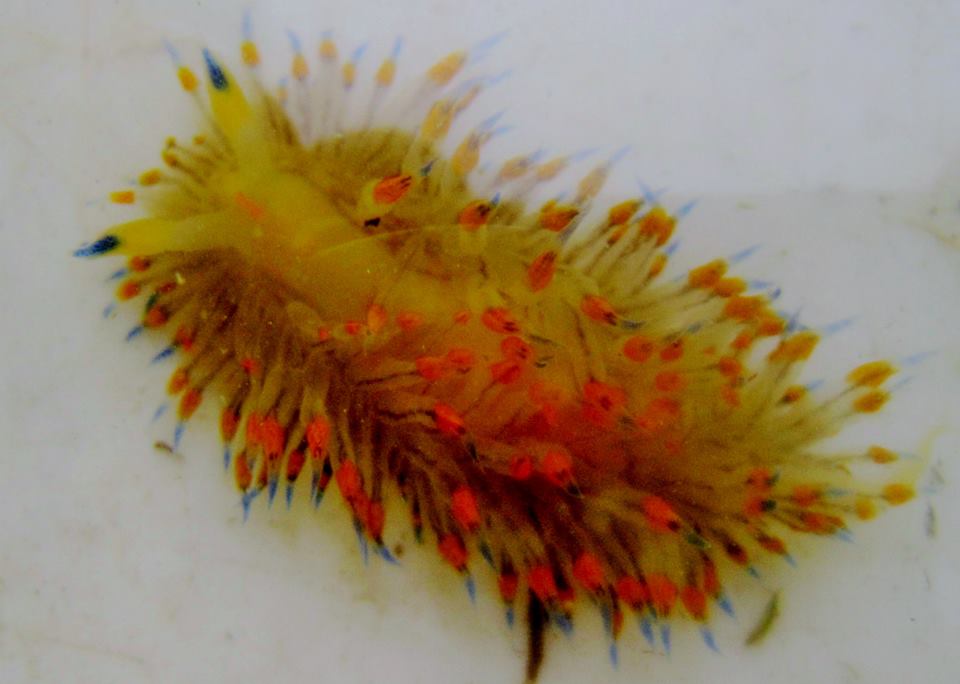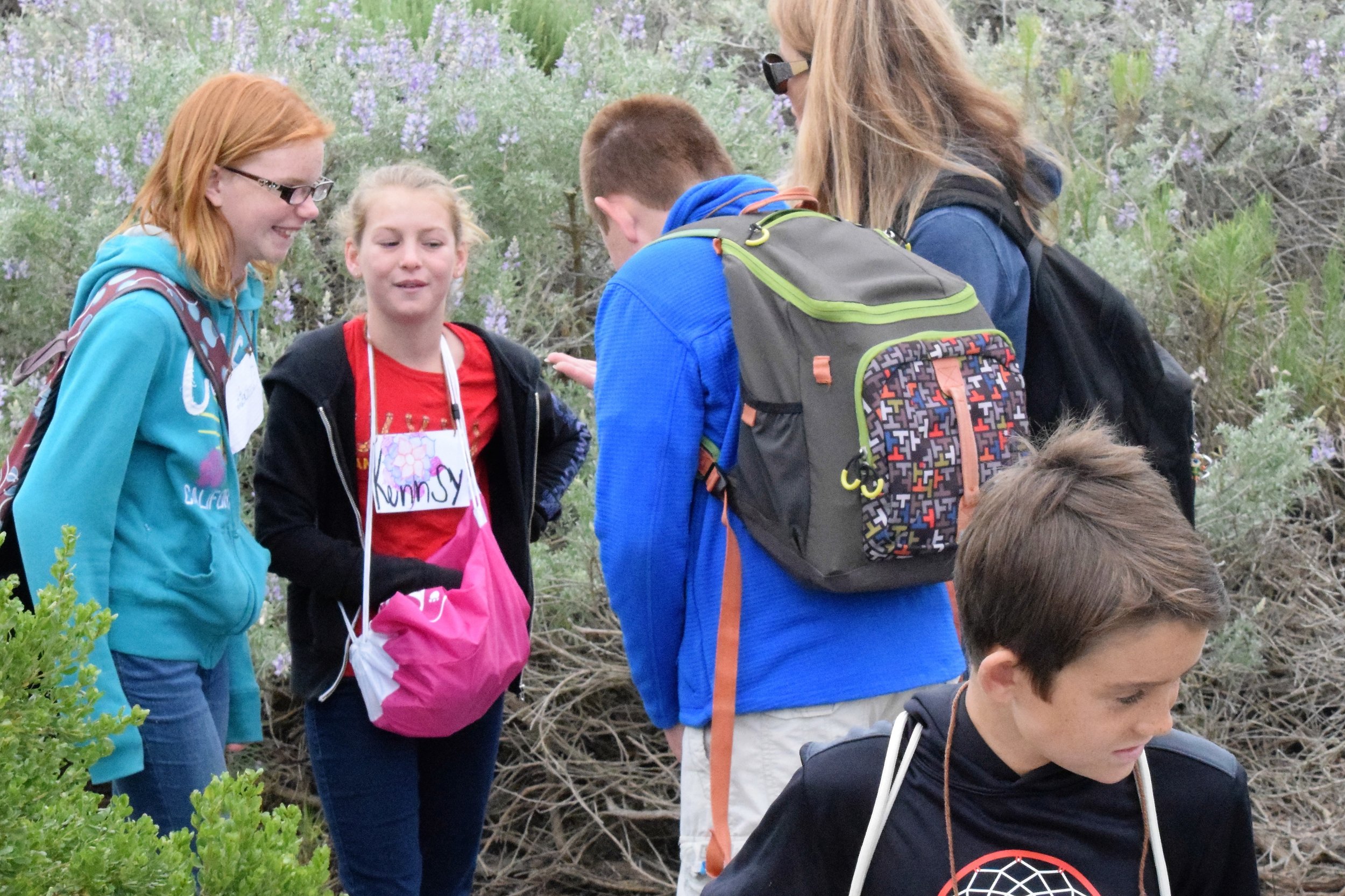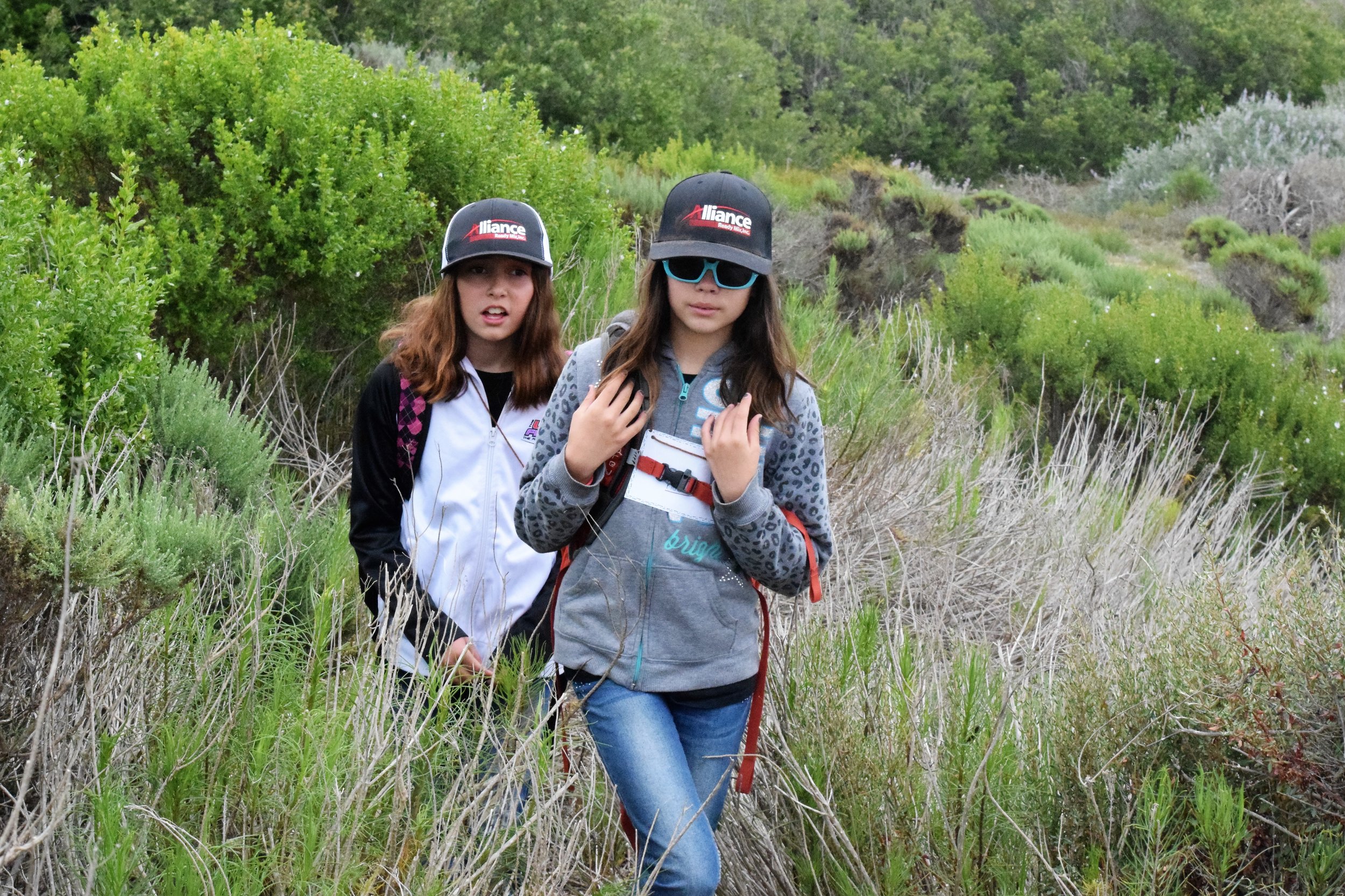Rekindling The Old Ways
The Amah Mutsun and the Recovery of Traditional Ecological Knowledge
by Mary Ellen Hannibal on April 06, 2016
DISCOVERING QUIROSTE
In late October 1769, a group of bedraggled Spanish soldiers arrived overland in the territory of the Quiroste Indians on the San Mateo coast. Motivated by news of the encroaching Russian fur trade, the King of Spain had directed Captain Gaspar de Portola to head north from his base in Baja California to secure a base for colonization of the California coast. Portola’s specific charge was to find Monterey Bay, sighted from sea some 150 years earlier by Sebastian Vizcaino. However, Monterey Harbor seemed too small to fit Vizcaino’s grandiose description, so Portola kept heading north. By the time he reached the Whitehouse Creek watershed, about a mile inland from the coast at Año Nuevo Point, Portola and his men were exhausted and running low on supplies. Expedition diarist Padre Juan Crespi wrote: “Here we stopped close to a large village of very well-behaved good heathens, who greeted us with loud cheers and rejoiced greatly at our coming.” He further documented a “very large grass-roofed house, round like a half-orange,” and large enough to contain the whole village. There, the men were fed and given native tobacco.
The Quiroste people restored Portola’s flagging troops—a magnanimous gesture and highly consequential in California history. Led by Indian guides, Portola and his men continued up the coast and, a few days later, “discovered” San Francisco Bay from a ridge above present-day Pacifica. “The Spaniards were lost, at the end of their rope,” California State Parks archaeologist Mark Hylkema told me. “The Quiroste head man could have turned them away. Instead he decided to host them.” Within a few years, the Spaniards began to establish missions along the coast, disrupting an Indian way of life that had evolved with the California landscape for thousands of years.
As a long-time archaeologist specializing in the California coast, Hylkema was interested in locating the remains of what Crespi called Casa Grande, the large roundhouse structure where the Quiroste hosted the Spaniards. Working from the expedition diaries, Hylkema knew the site must be near Año Nuevo Point. He listened to stories of local tribal people, studied the landscape, and scrutinized historical documents, motivated, as he put it, because “this is where pre-history met history.” First he searched along the Gazos Creek watershed in Pescadero. “But I realized the landscape there couldn’t have supported such a big building. It’s too wooded and there isn’t enough even ground.” Hylkema eventually located several sites on the valley floor of nearby Whitehouse Creek that evidenced historical Indian presence, so he zeroed in there.
With the help of students from Cabrillo College, in 2003 Hylkema radiocarbon-dated building material and plant remains, which showed that one of the major sites in the valley matching Crespi’s landscape descriptions had been occupied at the time of Spanish colonization. The archaeologists concluded they had located the remains of the historic village; subsequently, the site and its environs were protected as part of a 225-acre Quiroste Valley Cultural Preserve within Año Nuevo State Park.
Next, Hylkema turned to Chuck Striplen, then a UC Berkeley doctoral candidate and a member of the Amah Mutsun Tribal Band, for help exploring the site. While there are no known living descendants of the Quiroste people, the Amah Mutsun trace their lineage to historical polities in the area. Striplen, now an environmental scientist at the San Francisco Estuary Institute and a visiting scholar at UC Berkeley, assembled a multi-disciplinary team, including UC Berkeley archaeologist and California Indian scholar Kent Lightfoot, to begin the on-site investigation. The ongoing collaborative research at Quiroste includes the Amah Mutsun, researchers in disciplines such as ethnobotany and fire ecology, and state agency professionals.
A view of the Quiroste Valley to Año Nuevo Point includes the scrub-dominated slope in the foreground and the grassland prairie — site of a recently controlled burn — behind. (Photo by Sally Rae Kimmel)
A PEOPLE WITHOUT LAND
Tall and gently authoritative, Chairman of the Amah Mutsun Tribal Band Valentin Lopez has more than once reminded me that today’s California Indians live in two worlds. After working for the state of California for 28 years, including five years as commander for recruitment and testing for the California Highway Patrol, today Lopez is “retired” and focused on Amah Mutsun affairs. His right eye drifts, as if keeping tabs on another dimension. “In 2005 tribal elders came to a tribal council meeting and said, ‘We have to get back to caring for the land. Creator never rescinded our obligation to do that.’”
Lopez chuckled. “Can you imagine, these people with minimum-wage jobs—if they have them at all—and who don’t own any land themselves, saying we have to steward it? Now, where were we going to do that?” Lopez added that saying no to tribal elders was not an option. His dilemma was that the Amah Mutsun have no officially sanctioned tribal territory upon which to exercise their responsibility to Creator. This is both an existential quandary and a practical problem. Identity may be a birthright, but for Native Californians it is also established through observances and actions on behalf of the natural world.
“The Amah Mutsun and other coastal Indians were impacted particularly hard by colonialism,” Kent Lightfoot explained to me. In the Mexican period, the missions were closed by new colonial masters, and so-called Mission Indians were sent to work on large ranchos, even farther removed from their original land base. Today’s Amah Mutsun Tribal Band is composed of approximately 600 people who are direct descendants of several Mutsun-speaking tribal groups dispersed to the San Juan Bautista and Santa Cruz missions. Because they have been separated from their ancestral lands for so long, and their treaty with the federal government never ratified, the Amah Mutsun are not recognized as a sovereign tribe by the United States. Nonetheless, Lopez took the injunction from Amah Mutsun elders seriously and set about looking for ways to reinstate tribal stewardship of the land. When Hylkema and Striplen invited the tribe to participate at the Quiroste site, Lopez saw an opportunity.
A LANDSCAPE DEPRIVED OF FIRE
On a sunny, clear July morning in 2015 I joined members of the Amah Mutsun Native Stewardship Corps and the research team from UC Berkeley at Quiroste. The corps consists of younger tribal members who are learning their heritage by doing, which in this particular case meant removing invasive plants from the valley floor. To the untrained eye the landscape looks as Portola might have found it, lush, green, and wild. But this is misleading. Ironically, one of the ways we know something about the pre-contact California landscape is from the expedition journal fastidiously kept by Padre Crespi. Crespi carefully inventoried the elements of the natural world he saw: plentiful bears, redwood forests that seemed to go on forever, fields carpeted with wildflowers, and numerous wildfires burning along the coast
But after the Spaniards arrived they prohibited native burning. No longer cultivated by tribal people’s use of controlled fires, the populations of native plants and wildlife were vastly reduced. Here at Quiroste, woody vegetation, including native coyote bush and Douglas fir, encroached on native grassland species like purple needlegrass. Grazing and farming further converted the species composition here, with invasive plants arriving either inadvertently with imported livestock or through intentional introduction as browse. Both native and nonnative species are included in the mosaic of Quiroste Valley today. As UC Berkeley archaeologist and Quiroste team member Rob Cuthrell told me, “Grasslands are now only a minor part of the landscape. We want to bring back the open coastal prairies that were described in the earliest historical documents.”
Restoring a native landscape is not entirely possible but it represents a goal to move toward. Even this definition is complex. We tend to think of today’s native plants as having evolved and grown in an area without human intervention. One of the central assertions of the findings at Quiroste turns this assumption on its head: California’s “native” ecosystems had in fact been actively managed by the native people for a very long period of time.
LESSONS FROM UNDERGROUND
In her landmark 2005 book Tending the Wild: Native American Knowledge and the Management of California’s Natural Resources, cultural historian and ethnoecologist Kat Anderson describes how California Indians used an array of sophisticated ecosystem-engineering techniques to manage their environment in order to sustainably provide for the survival needs of their clans and tribes. Along with burning, they pruned, coppiced, sowed, and weeded to intervene in the life cycle of plants and animals and to direct their growth and reproduction. Anderson’s work is largely based on oral histories, ethnographic sources, and historical records. The Quiroste collaborative is building on her research to quantify scientifically assertions about what is frequently referred to as “traditional ecological knowledge.”
“We have done three summers of excavations at Quiroste Valley,” Cuthrell told me. “Our purpose was to investigate the resources people were using and how they were using them.” The team used noninvasive geophysical techniques—including magnetometry, ground-penetrating radar, and electrical resistivity—to look into the soil without disturbing potential ancestral remains. “We created a three-dimensional model of what is underground,” Cuthrell explained. “You can slice out a profile of an area and estimate, for example, how far a pit goes down.” The team used a technique called flotation to collect small plant and animal remains. Lighter materials in a soil sample, like burned seeds, wood charcoal, and fish scales, float up and are collected in a chiffon screen, leaving behind denser bone and stone remnants.
Read: Native Plants of the Quiroste Valley
Learn more about California Indians’ uses of four native plants at Quiroste: redwood, wild cucumber, tanoak, and clover.
Significantly, the work at Quiroste has unearthed multiple strands of evidence of indigenous burning practices to manage species composition and abundance. Archaeobotanical research shows a high proportion of woody plants—particularly redwood and California lilac (Ceanothus)—compatible with low-intensity landscape fire. Lightning strike fire is relatively uncommon on the California coast so the evidence points instead to frequent human-instigated burning. High proportions of grassland-associated food-plant remains are a further indication of intentional burning to prevent encroachment by shrubs and trees, and contrast with the scrub and Douglas fir woodlands that characterize the valley today. Archaeofaunal data shows small mammal populations consistent with open grasslands that would have been sustained by fire. And wind-borne charcoal particles found in wetland sediments provide direct evidence of landscape fires.
Fire wasn’t just used to encourage grasslands. Cuthrell hypothesizes that Native Californians also burned in conifer forests to promote growth of desirable understory species, such as hazelnut, which is rare at the site today. Left to its own devices, hazelnut may fruit only sporadically and sparsely, and “we suspect that some form of management would have been needed to make it abundant and productive enough to show up in the archaeological assemblage as much as it does in our sampling.” Taken together, the data points to a conservative conclusion that burning was practiced on this landscape for at least 1,000 years prior to Spanish colonization. And that fire regime had a significant impact on “the structure, diversity, and vitality of local terrestrial communities,” according to Lightfoot (California Archaeology, December 2013).
THEY WERE NOT FARMERS
The Quiroste findings are of historical significance. As Kent Lightfoot and Otis Parrish put it in California Indians and Their Environment (2009): “They are not farmers.” California Indians don’t fit into the typical paradigm whereby prehistorical hunter-gatherers evolve to become agrarian producers. California Indians evolved a complex food economy without cultivating domestic crops. For example, Indian pyro-techniques did not sever the ties between the species they cultivated and the landscapes those species grew in. The people availed themselves of the adaptive capacities of wild plants and animals. Using a complex system of low-intensity staggered burns, they provoked new growth of plants for food, medicine, and material goods, including baskets, tule boats, and houses. They maintained different patches of land at different stages of succession. Newly burned fields attracted specialist bird species; freshly sprouted fields drew deer and other prey animals within striking distance. Shrubby growth appearing a year or so after a burn was home to small mammals that were hunted and trapped. Mature forests were kept healthy with low-intensity burning of duff and other natural debris. California Indians, in effect, molded the native species and landscapes to sustainably provide for all living things, including food and fiber for people.
Chuck Striplen gave me a specific example of how California Indians’ traditional management of resources worked on willows. “Willows were harvested for all kinds of reasons,” he said. “Some were managed to cultivate very thick stems for housing. Thick, strong sticks with wide distances between the nodes would be cultivated for basketry.” Managing willows for different purposes led to creation of diverse habitat for species. “The act of clipping exposes inner plant tissue to a whole host of insects that are then fed on by birds. This goes on for hundreds and thousands of years, until you’ve created a habitat that is more a reflection of culture than it is of the plant itself. Because if those plants were just allowed to live and die on their own, they would go through big boom and bust cycles and not necessarily support a stable cascade of wildlife and plant species associated with them.”
This is the context behind the Amah Mutsun elders’ injunction to care for the landscape. Particularly in the face of climate change, it is more important than ever to understand how to restore the landscape to support native species. As Striplen told me, “We have this gaping chasm in our understanding of form and function in historical ecosystems. It makes sense to look back in time, to understand how ecosystems worked, in order to better understand how they are going to change. And to also understand how we might adapt and mitigate around those changes.”
BACK TO THE LAND
Could fire once again be introduced to this landscape and used to restore both its native diversity and its ability to sustain human existence? The answer isn’t simple. It turns out that a fair amount of work must be done before controlled burning can take place. Members of the Amah Mutsun Stewardship Corps were in the midst of their second summer of this work at Quiroste Valley Cultural Preserve when I visited the site in July to see the transformation of the landscape first-hand.
Prior to commencing the workday, Chairman Lopez led tribal members into a shielded green space to smudge the site by burning dried sage. Prayers offered, the team members started their work. Whooshing machetes opened up new spaces of sky as towering stalks of poison hemlock were felled. The hemlock has been crowding out a potentially healthy population of coast tarplant (Madia sativa) , a member of the sunflower family with ethnobotanical significance for the Amah Mutsun. Tribal members would like to manage the tarplant as their ancestors did, most particularly for the seeds, which were roasted, crushed, and mixed into pinole, a porridge-like staple of coastal California tribal diets. There is still tarplant at the site, but with hemlock prevalent, there is a danger of collecting the toxic hemlock seeds along with the tarplant.
The long-term plan is to revive the practice of burning the landscape here to restore a diverse suite of plants used by California Indians, including hazelnut, red maids, California lilac, and white root sedge (a basketry material) as well as purple needlegrass, California oatgrass, blue wild rye, and native barley. But Cuthrell says that burning now could perversely increase the number of invasives rather than knocking them back. “So we’re pulling out 20,000 hemlock plants,” he told me, “and we’ll do that year after year until we eradicate the seed bank.” As Lopez explained, “It took generations for this land to come unraveled and it will take seven generations to heal it. We don’t expect to get this done immediately but we must fulfill our obligation to Creator.”
RESTORING FIRE, TRUST, AND THE LAND
The Amah Mutsun’s work at the Quiroste Valley Cultural Preserve has been a jumping-off point for a range of partnerships aimed at restoring the tribe’s connections with its traditional practices. These include work with Pinnacles National Park, the University of California at Santa Cruz Arboretum, and the nonprofit Pie Ranch in Pescadero
Five years ago the Amah Mutsun took another big step toward reclaiming their role as environmental stewards by entering into an historic agreement with the Sempervirens Fund, the nation’s oldest conservation organization. Sempervirens was founded in 1900 to halt the destruction of the magnificent redwood forests of the Santa Cruz Mountains. “We were used to working with other natural resource management groups to protect ecological functioning here,” Reed Holderman, executive director emeritus of Sempervirens, told me. “But we didn’t really think about the cultural resources inherent in the landscape,” until Lopez and Amah Mutsun tribal members brought Quiroste to their attention. Organizations like Sempervirens have traditionally focused on acquiring land, but not on managing it once it is protected. “We desperately need to figure out how to take care of the land,” Holderman told me, “and the Amah Mutsun are poised to do it.”
Attempts at collaboration between tribal people and conservation groups have often been fraught and unproductive. But, Holderman recounted, “We spent three days in lockdown, asking ourselves how we could do things better,” and eventually the idea of an Amah Mutsun Land Trust emerged as a way to empower Mutsun authority on ancestral land despite the lack of federal sovereignty. “These people had everything taken from them,” says Holderman. “And yet they are restoring themselves and the land. This is an amazing story.”
The Memorandum of Agreement between Sempervirens and the Amah Mutsun includes provisions for descendant communities to access, manage, and restore the landscape, and Sempervirens pledges to work cooperatively with the tribe to develop educational programs to help the public understand the history and current-day situation of the land and the people.
Subsequent to the formation of the land trust, Sempervirens and the American Land Trust helped transfer into Mutsun hands a 90-acre easement on the Costanoa Lodge property just west of the Quiroste Preserve in the Whitehouse Creek watershed. As an easement, of course, the land is not “owned” by the Mutsun, but as Lopez said, “We don’t need to own the land to steward it,” and on this property they will be able to reinstitute tribal practices more directly than they are able to through partnerships.
In 2015, Sempervirens asked the Amah Mutsun to participate in planning for a burn in San Vicente Redwoods, a tract of second-growth redwood forest west of Boulder Creek. “When we purchased these 8,500 acres with the Peninsula Open Space Trust in 2011, it was the largest parcel of private property in the Santa Cruz Mountains,” Laura McLendon told me. McLendon is Director of Land Conservation at Sempervirens.
It was obvious to McLendon that fire would have to be part of the prescription for restoration of this heavily logged property. “It’s a landscape that’s hungry for fire,” she said. “Some of the plants there need fire to germinate or grow more robustly.” The area includes stands of oaks that may have been historically cultivated by Native Californians. “We went to Val Lopez and Rob Cuthrell and asked for their help in how to approach this,” she said. The resulting plan to burn 20 acres was thwarted by weather conditions in late 2015, but has been rescheduled for late fall 2016. “When we conduct a successful burn and quantify the benefits,” she told me, “we’ll help establish that this is an effective management tool.”
In his expedition journal from Portola’s 1769 voyage, Padre Juan Crespi duly documented mind-boggling fields of wildflowers, not realizing that the expedition he accompanied would lead to the demise of these blooms. Fire ecologist Richard Minnich, a professor at UC Riverside, told me that we could restore great beauty as well as better ecological functioning by reinstating fire practices on the land. “The wildflowers Crespi saw are still there,” he said. “They are waiting for fire to revive their seed banks.” Ultimately the science plus the history plus the traditional ecological knowledge uncovered at Quiroste will cohere when the Amah Mutsun can burn the landscape again. “Creator never rescinded our obligation to the Creation,” Valentin Lopez reminded me. He seemed to look off into the distance, and there was fire in his eyes.
Mary Ellen Hannibal is an award-winning environmental journalist and author of The Spine of the Continent (2012). Her new book, Citizen Scientist: Searching for Heroes and Hope in an Age of Extinction, will be published in August 2016.
Thanks to Sempervirens Fund, Christensen Fund and Kalliopeia Foundation for their financial support, and to Lindsie Bear (Heyday) and Beverly Ortiz (East Bay Regional Park District) for their assistance.
Join the Amah Mutsun Land Trust, Sempervirens Fund, and Bay Nature to learn more about the land trust and indigenous land stewardship. With Valentin Lopez and Mary Ellen Hannibal. Thursday, April 14, 6:00 pm at the David Brower Center, 2150 Allston Way, Berkeley.
More information at www.amahmutsun.org/land-trust
Read more about the innovative stewardship partnerships formed by the Amah Mutsun in New Paradigms for Stewardship




